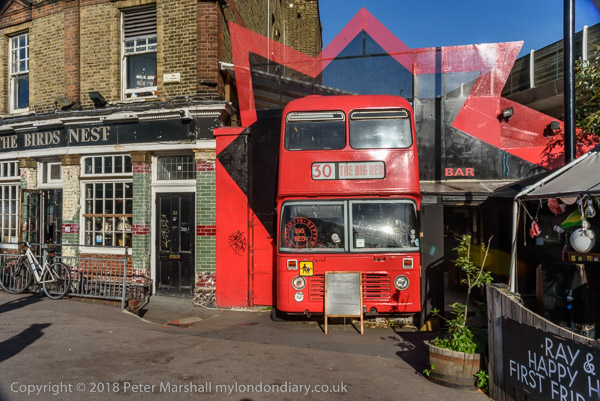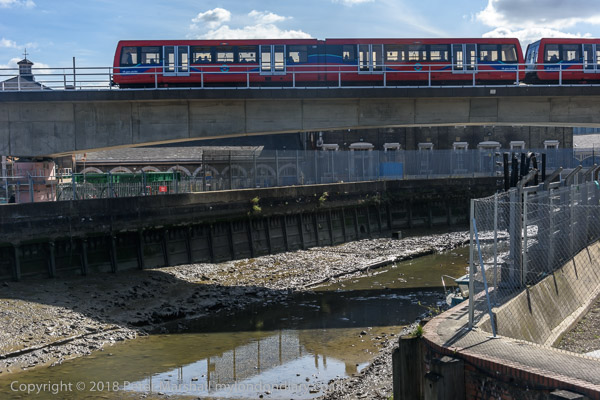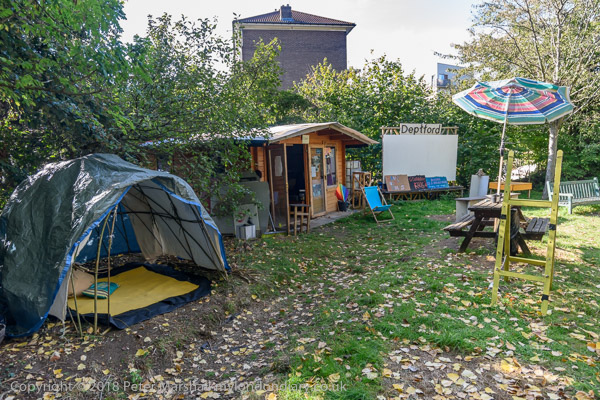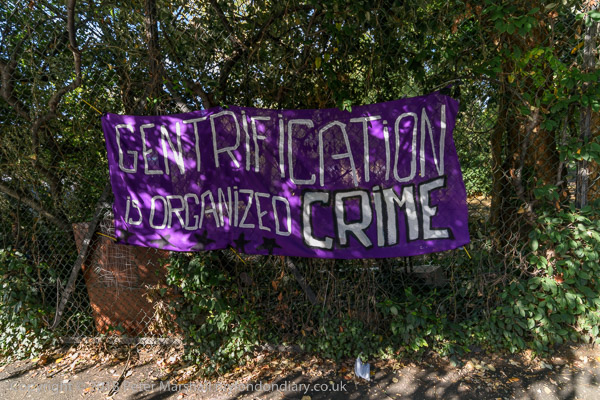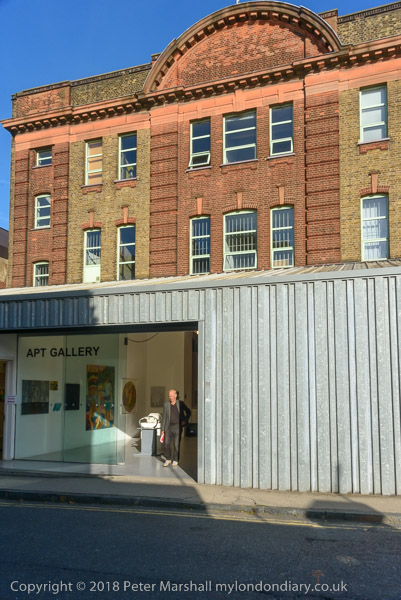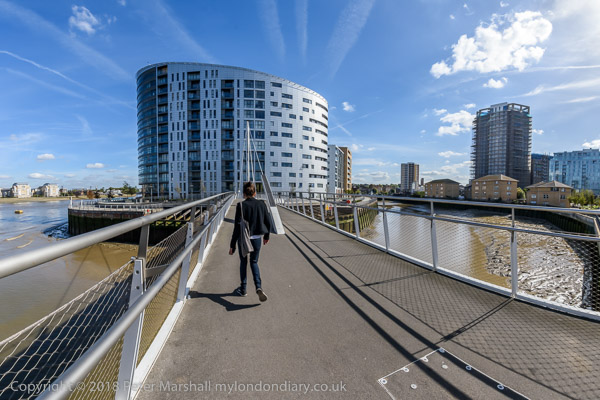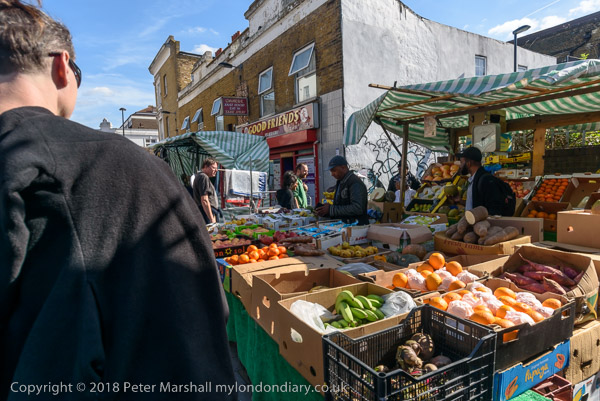Caledonian Road, Barnsbury & Lower Holloway continues my walk which began at Kings Cross on Sunday February 11th 1990 with the Kings Cross and Pentonville 1990. The previous post to this was Battlebridge, Canalside and Barnsbury – 1990.
From Thornhill Square I returned along Bridgeman Road to Caledonian Road, both sides of which are here lined with shops. Almost immediately on the east side of the road I saw this shop selling used furniture (I think it is now an estate agents) with the pavement in front having some of its stock – stacking tubular chairs – in front of a crude partition, at its left a phone card box and in front of that some cabinets used to support the shop’s sign.
The pavements along here are now cleared of clutter.
R Bleasdale & Co Ltd, Fire Escape Specialists had a splendid gate advertising their Victorian Metal Design. This was at 394 Caledonian Road where a similar business, The Cast Iron Shop, remained until around 2020, though the gate was long gone, together with the Sandwich Bar.
The sandwich shop also interested me with it with its striped awning and notices, incluind ‘DELICIOUS HOT SALT BEEF’ though I was unable to try it as like most shops then it was closed on Sundays.
Another window I found of interest, divided into two halgs one of much had four shleves each with two spider plants and above them a net curtain. The left half mixes the reflection of the buildings opposite with the menu, a light fitting, plants and cans of soft drink under a counter inside.
Chinese Chef was on the corner with Roman Way until around 2019
I walked a few yards down Roman Way to photograph Romeo Trading Co Ltd, making several pictures both in black and white and in colour. I think this is the company founded in 1941 specialising in military surplus clothing and now operating online and in “an impressive 85,000 square foot warehouse“, Romeo House, in Tottenham.
Their former site and more of the street is now occupied by a large block of flats, Roman Court.
From Roman Way I photographerd Mallet Porter & Dowd on the west side of Caldedonina Road at 465 made hard-wearing fabric from horse-hair at their premises close to the Metropolitan Cattle Market, used for uniforms and textile products. This building inscribed with their name dates from 1874.
It was disgracefully converted into student housing for University College London by Mortar Developments in 2015, in a development that retained the facade a few feet in front of an unsympathetic modern development to the detriment of both. It was a worthy winner of the 2013 v awarded by Building Design for the year’s worst building. Islington Council had rejected the scheme but this was overturned on appeal.
Salvo C F S Ltd, Wine & Provision Importers occupied the building immediately south of Mallet Porter & Dowd until it was demolished around 2011. The company was set up by Salvatore Cumbo who owned a pizzeria in London to import Italian food and drink as wholesalers. The company moved here in 1975, and moved out in 2011 to larger premises in Hertfordshire.
The doorway between the two buildings had the number 465 and so was to the Mallet Porter & Dowd building; the free-standing ‘facade’ rather oddly retains its right hand edge of this door. It perhaps led to the offices and the building also had the wider doorway at the right of the picture.
At this point I think I decided to take a little rest and got on the tube. I’d planned to get to Finsbury Park and time was running out. The next in this series of posts will begin with tthe next frame I made which was in Finsbury Park.
Flickr – Facebook – My London Diary – Hull Photos – Lea Valley – Paris
London’s Industrial Heritage – London Photos
All photographs on this page are copyright © Peter Marshall.
Contact me to buy prints or licence to reproduce.






